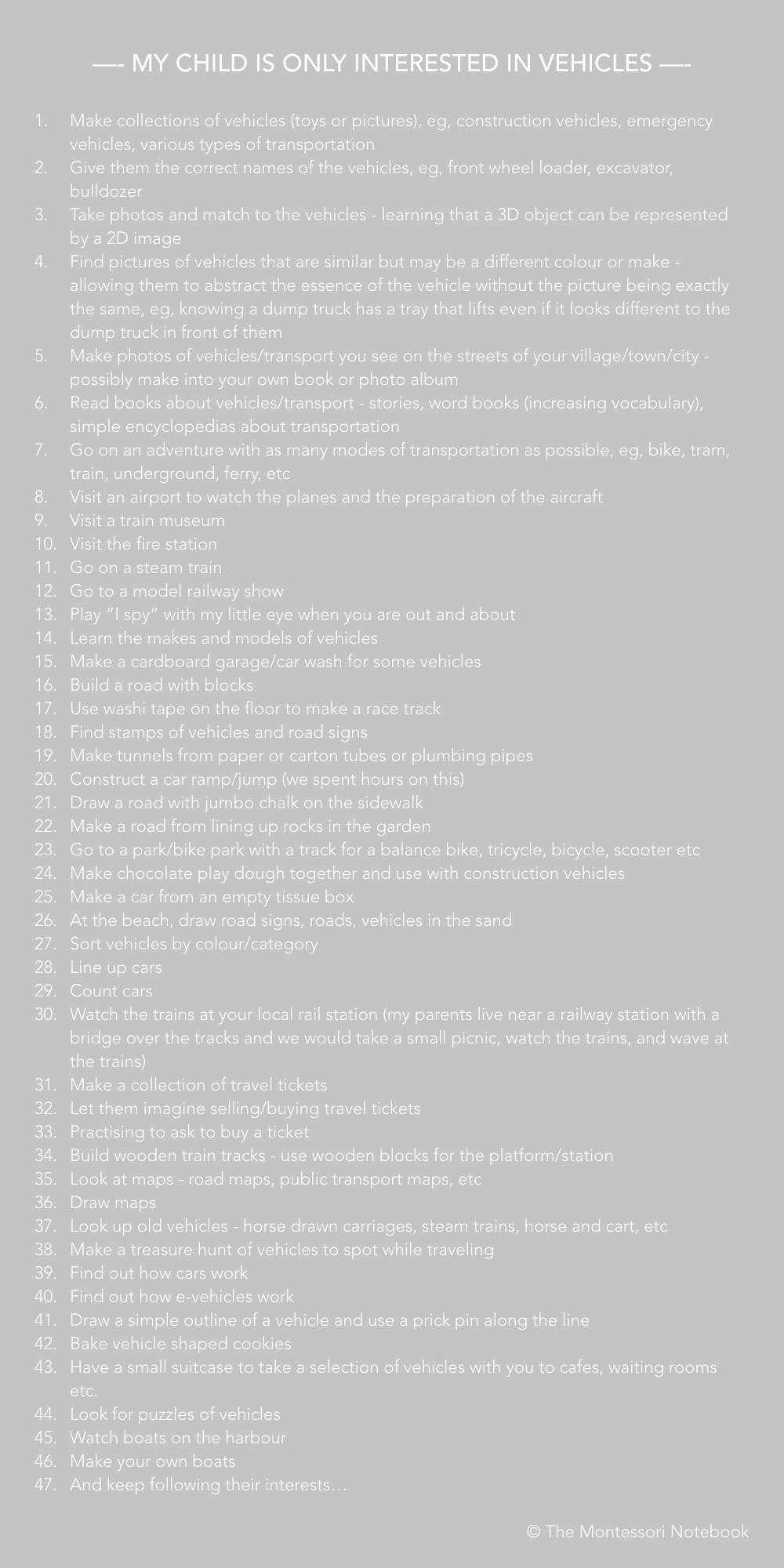What if my child avoids an area completely or only plays with one thing?
I’ve had many parents think that Montessori sounded great but then they get a little nervous thinking about the idea that a child with all that choice might avoid an area completely, or only play with one thing.
It certainly takes a lot of trust to follow the child. To understand that children have a natural desire to learn. To explore. To challenge themselves.
Particularly if we grew up with a traditional approach to education where we only learned what we needed to learn to pass the tests. Where the adult told us what we need to learn. And where we had to try to motivate ourselves to be interested.
On the other hand, in a Montessori approach, the child seeks mastery as motivation (more here). Following their own interests. On their unique timeline.
I understand that it’s scary to let the child lead. So here are the two concerns I hear most.
1. If the child avoids an area
Let’s say that the child is exploring the environment but avoids an area, for example, art, language or maths.
With toddlers, I really have no preconceived idea of what they must be learning. I’m following their interests and the way they learn. I see some children stay with one activity and repeat and repeat it until they master it. I see others observing another child, then go over and complete the activity the first time. And there are other children that will touch every activity, move the pieces to another area, bring me a piece, and move onto the next piece.
I’m trusting that they know what they need to practice.
I let go of what they should be doing.
I observe and see what they are working to master, how their hand moves, what would help them to refine their gross motor movements, their interest in language, communication, self-expression. And provide them a rich environment to explore to meet these needs. (For more on the types of activities, read more here and here)
So when they avoid an area, I can then ask myself questions like:
- Are they learning these skills in another way? For example, a child who does not show interest in holding a pencil, may be interested in a prick-work activity or building their hand strength with clay.
- How much has the child developed already without us forcing them to learn anything? They have learned to walk, talk, communicate, carry heavy objects etc. A reminder that children will learn when they are ready.
- Can I let go of my timeline for them to develop in their own way? Timelines can vary +/- 6 months on some milestones and we can trust our child is unique in when they will learn the skills. They will come to this area when they are ready.
- Do I need a specialist to check their health or development? I’m all about being proactive if I think there may be a problem. For example, getting their eyes tested if they become aggressive when other children come close (can be disorienting if their eyesight is impaired) or their hearing if they don’t seem to be talking (for example, frequent ear infections/blocked ears may affect what they have been taking in).
- Is it normal? A child learning to walk will often plateau in language as it takes so much neurological effort to learn to walk. Vice versa, a child who is very verbal may be slower to walk.
- Is there a rich learning environment? Are they being challenged? Keep looking for those activities that keep their attention and provide more opportunities to explore these further.
- Observe. Record exactly what I see so I am not making an assumptions about the child.
For a school-aged child, the Montessori teacher will also keep close records of the activities that the child has mastered and is currently working on. So the Montessori teacher will notice when the child is avoiding an area. Then they can make an assessment whether the child is making some progress in this area (perhaps at a slower pace), whether they need some assistance to engage in this area to see it in a new way, or whether additional support should be sought.
Most times it is simply the child’s unique timeline at work.
2. When a child only plays in one area
On the flip side, we may find that a child seems to have an intense interest in one activity or area.
Applying the Montessori approach, trusting the child and following their interests, we can use these deep areas of interest to engage them in many ways. And, when they are ready, they will move on naturally by themselves.
I still remember asking when I attended a parent-child Montessori class with my own son (now 17 years old!), if he would ever grow out of his obsession with the farm animals. It seemed that was ALL he would do each class. Ferne kindly reassured me that this was what he needed to be working on right now, to allow him to completely go through this “phase”, and he would move on when he was ready. The very next class, I noticed him moving into other areas of the classroom that he’d not yet explored.
Follow. The. Child.
There was also an intense interest in vehicles for a time with both my children. Perhaps you are also in this stage, so I wanted to be the one to reassure you that it will move on. And yet we can use this area of interest to pique their curiosity in many ways.
So I’ve come up with a list of some ideas that might help you see how this might work in practice. You can apply the same idea to brainstorm ANY area of interest.

For some of my favourite books about vehicles, see here. The chocolate playdough recipe can be found here.
I hope this will help you trust your child, help you to see learning as fun, and remind you that it is possible to follow the child’s interests and allow them to learn in a natural, unforced way.

Simone Davies has more than 20 years’ experience as an AMI Montessori educator. Simone is the author of “The Montessori Toddler” and co-author of “The Montessori Baby” and “The Montessori Child” books, comprehensive guides to raising children in a Montessori way. She currently runs parent-child Montessori classes in Amsterdam at her school Jacaranda Tree Montessori. She also has a popular blog, instagram and podcast “The Montessori Notebook” and is mother to two young adults.